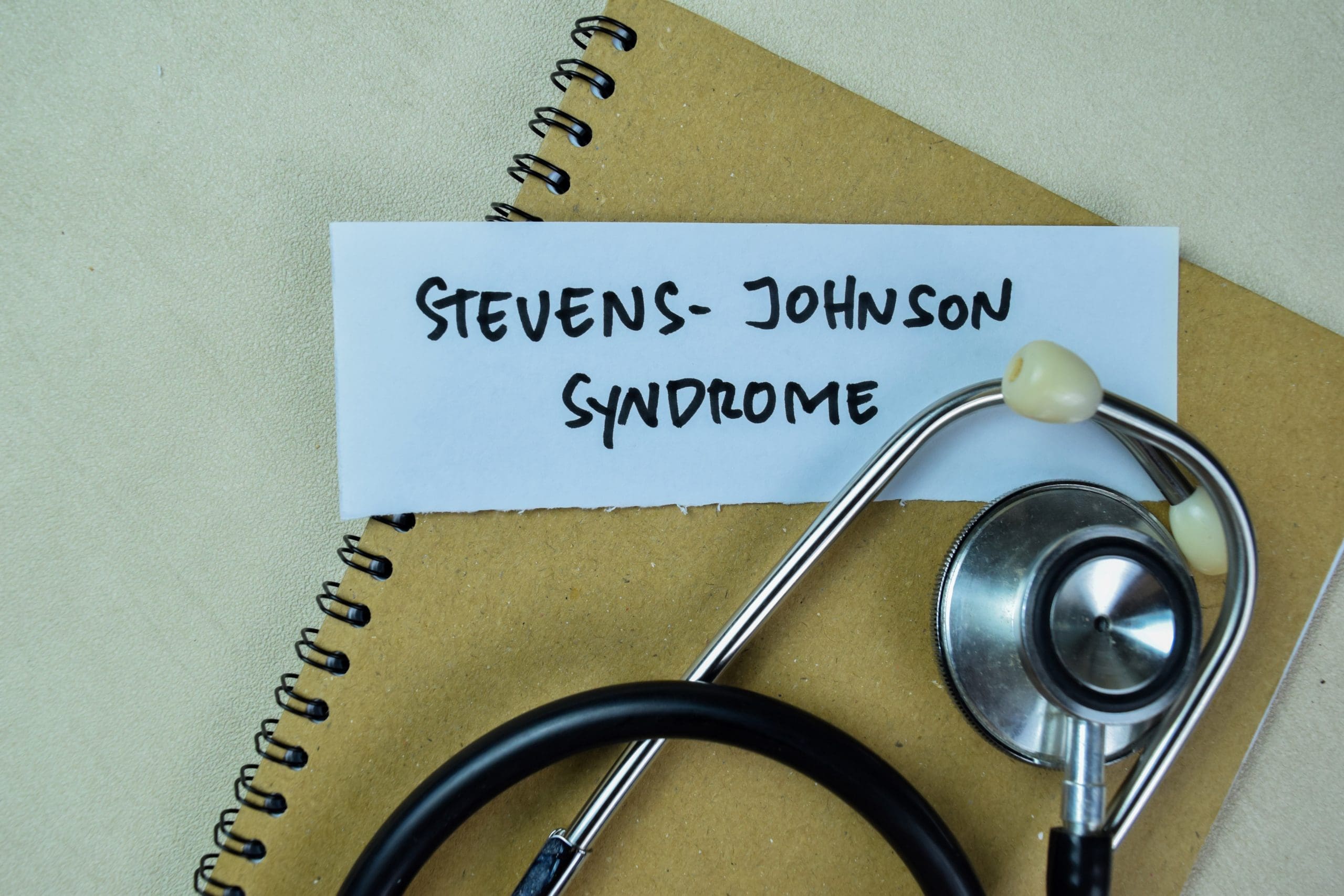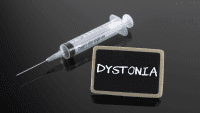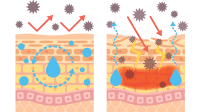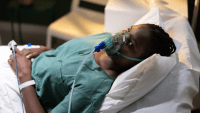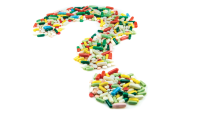Immediate medication discontinuation aids treatment success.
- Stevens-Johnson syndrome is a life-threatening necrotic rash associated with various medications, including anticonvulsants.
- Asian Americans and South Asian Indians face increased risk because of human leukocyte antigen allele HLA-B*1502.
- Treatment for minor rashes includes stopping the triggering agent and administering diphenhydramine. Severe rashes require hospitalization and treatment with prednisone.
Jordan Davidson*, a 20-year-old Asian-American woman, arrives in the emergency department (ED) with a painful rash that has progressed to blisters. The blisters appear on the skin and the mucus membranes of the mouth, throat, eyes, genitals, and anus. Ms. Davidson reports that cough and body aches preceded the rash.
As ordered, the ED nurse draws blood for cultures, CBC, and CMP; he also takes a urine sample. During the medical history, Ms. Davidson reports that she recently received a diagnosis of bipolar 2 disorder and was prescribed lamotrigine and valproate (anticonvulsants used to treat bipolar disorder). The ED provider suspects that Ms. Davidson has Stevens-Johnson syndrome (SJS). She immediately discontinues lamotrigine, but continues valproate to prevent mania as it poses no risk. To rule out other possible causes for the patient’s condition, the provider orders a chest x-ray and samples of skin containing blisters for biopsy and culture. All test results are normal, confirming SJS.
What you need to know about bipolar disorder
Ms. Davidson is transferred to the medical surgical unit. The hospitalist prescribes broad-spectrum antibiotics (to prevent the spread of possible infection), acetaminophen, and I.V. fluids.
On the scene
When you enter Ms. Davidson’s room you find her slightly febrile and diaphoretic with flu-like symptoms. Her vital signs are HR 110 bpm, respiration rate 22 breaths per minute, temperature 101.9° F (38.8° C), and BP 120/86 mmHg.
Per orders, you start I.V. fluids, place nonadhesive dressings on the affected areas, and administer benzodiazepine 1 mg for anxiety. The hospitalist also orders cyclosporine (5 mg/kg in two divided doses per day), which has recently emerged as a promising treatment for SJS because of its effective anti-apoptotic activity.
Outcome
Ms. Davidson is transferred to the ICU where the provider orders opioid pain medications and an NG tube to assist with nutrition. After 2 days, the lesions decrease and the fever resolves. After 3 days in the hospital, Ms. Davidson is discharged home.
Education
SJS is associated with anticonvulsants prescribed to treat bipolar disorder, antigout medications, some antibiotics, and common OTC pain medications. The rash can involve 10% to 30% of the body; the most severe form, toxic epidermal necrolysis, involves 30% or more of the body. In Ms. Davidson’s case, rapid increase in lamotrigine and combining it with valproate most likely resulted in SJS. Asian Americans and South Asian Indians have an increased risk for SJS due to the human leukocyte antigen allele HLA-B*1502. (To learn more about SJS and triggering medications, visit ncbi.nlm.nih.gov/books/NBK459323.)
SJS may begin with flu-like symptoms, followed by a maculopapular rash that progresses to a pustular or bulbous rash. Rashes can produce skin sloughing, exposing underlying skin layers and causing extreme pain, hemorrhage, heat loss, and massive fluid and protein loss.
If the rash is minor, treatment includes stopping the agent and administering diphenhydramine 25 to 50 mg twice a day. For more severe rashes, treatment includes prednisone 10 mg twice a day.
Patients experiencing severe symptoms require hospital admission and laboratory studies to monitor for developing anemia, neutropenia, thrombocytopenia, elevated erythrocyte sedimentation rate, and elevated blood urea nitrogen.
For any patient taking anticonvulsants, advise them to quickly report any sign of rash to their provider and stopping the medication. SJS usually resolves within a few days, but severe cases may take several months. Instruct patients who’ve been treated for SJS to call 911 or go to the ED if symptoms recur.
*Names are fictitious.
American Nurse Journal. 2024; 19(4). Doi: 10.51256/ANJ042450
References
Balai M, Meena M, Mittal A, Gupta LK, Khare AK, Mehta S. Cyclosporine in Stevens-Johnson syndrome and toxic epidermal necrolysis: Experience from a tertiary care centre of South Rajasthan. Indian Dermatol Online J. 2021;12(1):116-22. doi:10.4103/idoj.idoj_326_20
Boland RJ, Verduin ML. Kaplan & Sadock’s Synopsis of Psychiatry. 12th ed. Philadelphia, PA: Lippincott Williams & Wilkins; 2021.
Cleveland Clinic. Stevens-Johnson syndrome. December 18, 2020. my.clevelandclinic.org/health/diseases/17656-stevens-johnson-syndrome
Frantz R, Huang S, Are A, Motaparthi K. Stevens-Johnson syndrome and toxic epidermal necrolysis: A review of diagnosis and management. Medicina. 2021;57(9):895. doi:10.3390/medicina57090895
Goldman JL, Chung W-H, Lee BR, et al. Adverse drug reaction causality assessment tools for drug-induced Stevens-Johnson syndrome and toxic epidermal necrolysis: Room for improvement. Eur J Clin Pharmacol. 2019;75(8):1135-41. doi:10.1007/s00228-019-02670-9
Mayo Clinic. Stevens-Johnson syndrome. January 7, 2023. mayoclinic.org/diseases-conditions/stevens-johnson-syndrome/symptoms-causes/syc-20355936
Stahl SM. Stahl’s Essential Psychopharmacology: Prescriber’s Guide. Cambridge, England: Cambridge University Press; 2020.
Tusaie KR, Fitzpatrick JJ. Advanced Practice Psychiatric Nursing: Integrating Psychotherapy, Psychopharmacology, and Complementary and Alternative Approaches Across the Life Span. 3rd ed. New York, NY: Springer Publishing; 2022.
Key words: Steven-Johnson syndrome, necrotic rash

